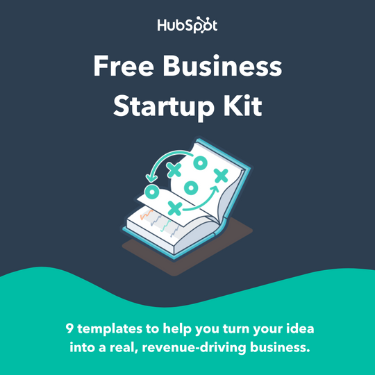My colleagues from HubSpot for Startups set out to find the answer.
They surveyed 500+ early-stage startup founders — from pre-seed to series B — across the US and Europe, and compiled an insights report that I can only describe as... meaty AF.
Some snippets of their findings:
- 52% of founders pitched 10-50 investors before getting any funding
- 42% say that fundraising has been more difficult in the last year
- 53% of startups raising $4m+ are AI-based (surprise, surprise)
Oh, and almost 60% of the startups surveyed categorize their product or service as AI.
While AI-based startups are getting a leg-up in the fundraising race, it still takes a combination of classic moves and new tech to up their rizz in front of investors.
What are those moves, you ask?
The full report covers an extensive amount of survey data and expert insights from both ends of the spectrum. But to give you a taste, here are some gems straight from the horse’s mouth.
1. What Are Investors Looking For?
Josephine Chen, Partner at Sequoia Capital
In VC fundraising, the name of the game is to find product market fit. When it happens, you see an inflection point of some sort. It could be:
- Attention
- User growth
- Product velocity (i.e. people asking you for more features)
We all look at the market, the founder(s), the product, and the level of customer love. For each stage, we weigh different parts of these slightly differently.
It's about the market dynamics and there being a really good 'why now?' We look for the intersection between the market and an outlier founder. And in all our early stage companies, we want to see velocity, in both speed and direction.
Jason Druker, Chief Commercial Officer at SFC Capital
At SFC, it really comes down to the team. We take as scientific an approach as possible to assessing the cofounders (we like co-’s rather than solos).
It's not about their background or ethnicity — in fact, we go the other way and invest in underrepresented founders and have a diversity mindset. We look at how a founder's personality aligns with their cofounder. We like to see somebody who's driven, then someone else who is either sales or somebody you want to follow.
Nate Morgan, HubSpot Ventures investor
What we also look for, and what founders shouldn’t underestimate, is the power of a strong community when it comes to securing funding in a competitive VC landscape for AI-native startups.
Building community within your early customer base and partner ecosystem means you can develop it over time, and a large (and loud) community online tends to stand out over everything else.
2. On Fundraising Timelines
Sophie Winwood, Co-Founder and CEO of WCV:E (a VC summit)
Fundraising in general is still pretty difficult. We've seen timelines extend — seed is looking like 3-4 months. That's a significant jump.
My rule of thumb:
- Pre-seed: Give yourself up to 3 months. If it's taking longer, maybe something's not right.
- Seed: Up to 6 months
- Series A: Up to 12 months
It's become an investor-friendly market, and more time is being taken by investors, which is a good thing for both sides. You want an investor who really knows your business — they're more likely to be a long term player and support your business if they build the relationships before investment.
Eva Dobrzanska, Managing Director of Fundraising Playbooks
Start raising sooner than you think you need to. You're not going to build a relationship within one touchpoint of one email. Finish off your first outreach with a cliffhanger, then follow up with relevant updates. Then it becomes a line, not just a point.
Jason Druker, Chief Commercial Officer at SFC Capital
Founders need to consider [fundraising timelines] as far out as possible. Be driven by the runway, but also by the fact that your runway could easily run out whilst you're raising your seed round. Start that process as early as possible and enable yourself using tech.
3. General Advice
Olivia O'Sullivan, Partner at Forum Ventures
Take the time upfront to set yourself up for success. Set up a CRM so that you can work through the stages.
Add any investor who tells you, “we might be interested” to a nurture bucket in your CRM. Anytime something big happens, send an email update to that whole list of people in the nurture bucket.
Eva Dobrzanska, Managing Director of Fundraising Playbooks
I'm a huge advocate of an online presence and posting regularly. I cannot count how many opportunities have come my way just because of LinkedIn. Post and talk to people and showcase what you've been doing. The community aspect is huge — it's a small world.
So be present on LinkedIn, attend conferences, and show up where your ideal investors are… People do business with people they like, and people invest in people they like.
Now go check out the full report for:
- Startup growth indicators for different stages
- A fundraising checklist
- Most popular fundraising tech stacks
- Which industries are raising the most capital
...and a lot more!
Startups

.png)



.png)
-2.png)
.png)
